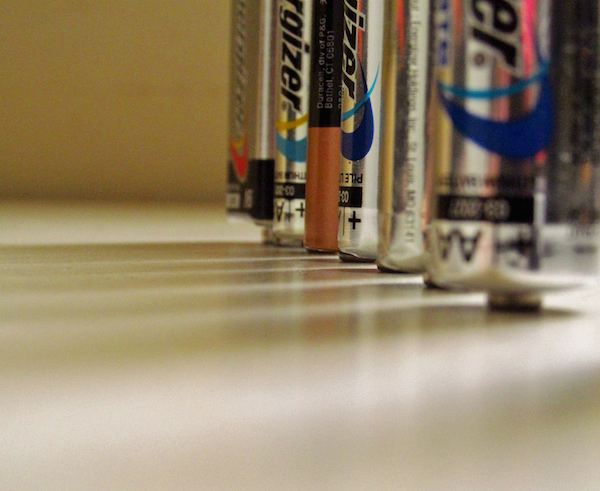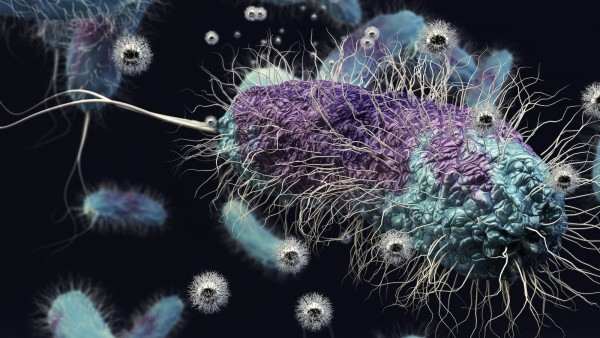
[Image above] Credit: Yasmeen; Flickr CC BY-NC-ND 2.0
Our desire for all the latest devices creates an incredible mound of electronic waste (e-waste). Estimates suggest that mound will weigh as much as 200 Empire State Buildings by 2017.
But the problem is not just the obvious environmental impact of this pollution or the waste of material resources.
Because even if those discarded electronic devices are recycled, you might be surprised by the way their materials are reused—and horrified by the human impact of this so-called “green” process.
Most of you reading this probably are just as guilty of the disposable tech mindset as I am—it’s a part of today’s culture, even written into the new-every-two upgrade conditions of our wireless contracts.
Magically self-destructing electronics are a great solution to the world’s growing e-waste problem, but they are not really a viable solution, at least not yet.
So we at least need to understand how the new materials we develop impact the world beyond us. For example, what happens when batteries are set adrift into a manmade landfill mountain?
According to a new study by researchers at the University of Wisconsin–Madison and the University of Minnesota, those battery materials may have severe untold consequences.
Their study of lithium battery catalyst nickel manganese cobalt oxide (NMC) shows that nanoparticles of the material can harm important bacteria that reside in the soil.
Nanoparticles of the catalyst are emerging as a prominent component of the next generation of lithium batteries, partially because the material is so economical.
According to University of Wisconsin-Madison news release about the research, NMC has two key points going for it. Nickel and cobalt are very inexpensive materials, and yet the nanoparticles work more efficiently in battery cathodes than conventional battery materials—the combination of which puts NMC in a strong position to win over other possible battery materials.
So NMC isn’t just any catalyst, it’s one that’s poised to be incorporated into a rapidly growing cache of batteries to help power a greener world.
And similarly, the bacteria the researchers studied aren’t just any soil bacteria—they play a critical role in breaking down metal ions into nutrients. In other words, they are the very microbes that could remediate the mounding e-waste situation.
Those bacteria, Shewanella oneidensis, are hardy and ubiquitous in the environment worldwide. Impressively, the bacteria are able to extract energy from the breakdown of metal ions, converting those substances into nutrients that other organisms can consume.

Shewanella oneidensis converts metal ions to metals like iron that serve as nutrients for other microbes. Credit: Ella Marushchenko, University of Minnesota
But when exposed to NMC nanoparticles, S. oneidensis lose their metal-breakdown mojo. The oxide inhibits the bacteria’s growth and respiration, an indicator that the material is not friendly to the remediating microbes, according to the University of Wisconsin-Madison news release.
However, this research is preliminary—meaning that this is the first indication of a potential problem. More research and further characterization of precisely how the nanoparticles affect S. oneidensis is needed, but it could be an early indication of a huge untold impact of these materials.
Until we understand more about how these and other materials impact the world around us, the safest course of action is to try to make sure these materials don’t end up in landfills, the researchers say.
“There is a really good national infrastructure for recycling lead batteries,” lead researcher Robert Hamers says in the release. “However, as we move toward these cheaper materials there is no longer a strong economic force for recycling. But even if the economic drivers are such that you can use these new engineered materials, the idea is to keep them out of the landfills. There is going to be 75 to 80 pounds of these mixed metal oxides in the cathodes of an electric vehicle.”
The research, published in Chemistry of Materials, is “Impact of nanoscale lithium nickel manganese cobalt oxide (NMC) on the bacterium Shewanella oneidensis MR-1” (DOI: 10.1021/acs.chemmater.5b04505).
